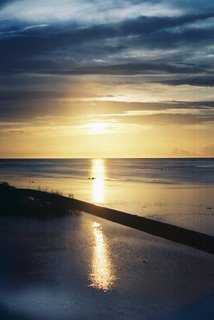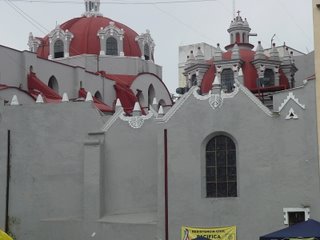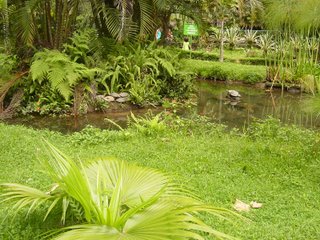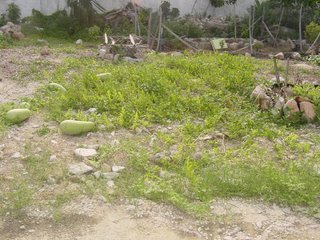Late last week I visited Ria Lagartos, a long, narrow estuary along the North Yucatan coast, nearer to Cancun than to Merida. Like Ria Celestun, which I visited in February, Ria Lagartos is located within a "Biosphere Reserve" that supports a number of fishing

villages and is home to flocks of flamingos, cormorants, pelicans, many other species of water fowl, crocodiles and other terrestrial fauna.
Also like Celestun, local entrepreneurs offer boat trips during the day to view flamingos and trips after dark to view crocodiles.
Unlike Ria Celestun, which has one outlet to the Gulf of Mexico at its Southern end, the peninsula that separates the Ria Lagartos from the Gulf is transected by a number of channels.

To travel there I opted to drive federal highway 176 rather than 180, the direct route to Cancun, and then North on federal highway 295 from Tizimin.
Just before reaching the town of Rio Lagatos I headed West to the town of San Felipe where I arranged a room at the Hotel San Felipe.
As you may see in the photo to the left, heavy rain was falling upon my arrival.
After checking into my room the proprietor asked if I’d ever eaten Manta Ray, which, of course, I never had.
Soon I was served a delicious meal of a shredded Manta Ray/vegetable stew, mixed cooked vegetables, onions marinated in vinegar, refried beans, corn tortillas and a cold Superior.
After lunch I walked along the San Felipe malecon photographing birds perched on pilings and the fishing boats that lined the malecon. Later I drove to the towns of Rio Lagartos, from where boats trips up the Ria leave; and Las Coloradas, a tiny puebla on the Ria at the end of the road where salt is extracted from sea water and placed
by a conveyor onto a huge purewhite pile.
The salt is transported by conveyor across the road to a dock in the Ria.
As dusk approached the sky cleared and I headed for the roof of the hotel to await sunset in hopes of getting a good picture. The roof afforded a nice view of the small town; the Ria; the heavy, open hulled, fiberglass fishing boats along the malecon; and the Gulf beyond the peninsula.
Soon a woman and her two daughters from Merida joined me and immediately engaged me in conversation. They suggested that for my return to Merida that I take the road along the Gulf coast from where one may see flocks of flamingos and the many coastal fishing villages. Soon we were joined by a fellow from Mexico City who was also anxious to talk.

As it turned out there was pretty nice sunset. The moonset the next morning wasn’t bad either.


Thanks to the woman from Merida and her daughters, though, the best part of the trip for me was the return.
From San Felipe I drove South to the small town of Panaba; from there took a very narrow, sparsely traveled road through completely undeveloped back country to the even smaller town of Yalsihon; and on to Dzilam de Bravo where I rejoined the Gulf coast.
The drive afforded views of lots of vultures, Crested Caracara, Ibis, and some sort of small mammal with a bushy tail that looked like a cross between a fox and a cat.

At one point I noticed a small animal slowly walking across the road which seemed to me to be a small crab, which I thought a bit strange given the distance to the water.
A bit later I spotted another of the same crawling creature, stopped to get out for a better look, and discovered it was a very large black and orange tarantula.
The drive from San Felipe to Chelem, with a stop for a lunch of fried fish, marinated vegetables,
and refried beans, took about three and a half hours.
So it seems to me that a great trip from Merida would be a drive to Progreso, East along the coast to Dzilam de Bravo, along the back road to Panaba, and South for a night in Valladolid.
 This is the cathedral across the street from the Veracruz state government building and adjacent to the main city park. The photo at the right shows the portion of the building to the right of that shown at left.
This is the cathedral across the street from the Veracruz state government building and adjacent to the main city park. The photo at the right shows the portion of the building to the right of that shown at left.


















